In Arizona, bird enthusiasts and nature lovers are in for a treat as the state is home to various falcon species.
Five notable species of falcons grace the skies of Arizona, offering avid birdwatchers thrilling opportunities for observation.
The state’s unique geographical features, ranging from deserts to mountains, provide an ideal habitat for these majestic birds of prey. From the iconic Peregrine Falcon to the swift American Kestrel, Arizona boasts a rich avian tapestry.
In this guide, we will delve into the distinct characteristics of each species and provide insights into prime locations where enthusiasts can witness these falcons in their natural element.
Embark on a journey through Arizona’s landscapes to witness the breathtaking aerial displays of these incredible falcons.
5 Types of Falcons in Arizona
Arizona’s vast landscapes host an avian spectacle featuring five remarkable falcon species.
From the Peregrine Falcon’s stoop to the American Kestrel’s hover, this guide unveils where and how enthusiasts can witness these majestic predators soaring through Arizona’s skies.
1. Peregrine Falcon
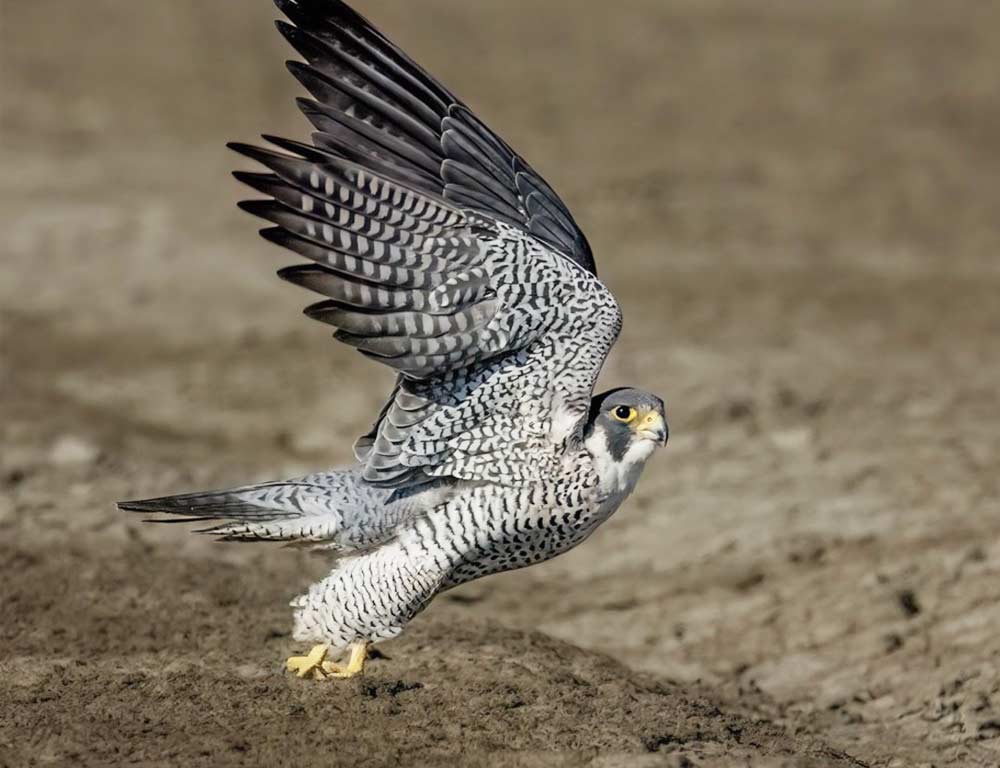
- Scientific Name: Falco peregrinus
- Population: Varied; substantial populations due to conservation efforts.
- Life Span: Up to 15 years.
- Size: 14 to 19 inches.
- Weight: 1.2 to 3.3 pounds.
- Food: Primarily birds, particularly mid-sized species.
- Wingspan: 3.3 to 3.6 feet.
The Peregrine Falcon, renowned for its breathtaking stoop, is an agile predator in Arizona’s diverse habitats. With keen eyesight, it targets birds in rapid, high-speed dives.
Their impressive wingspan and robust build contribute to remarkable speeds, making them one of the world’s fastest birds. Peregrines often nest on cliffs, using the elevated vantage points for hunting.
Conservation efforts, including the ban on certain pesticides, have contributed to their rebounding populations, enhancing the chance for enthusiasts to witness their spectacular aerial displays.
2. American Kestrel
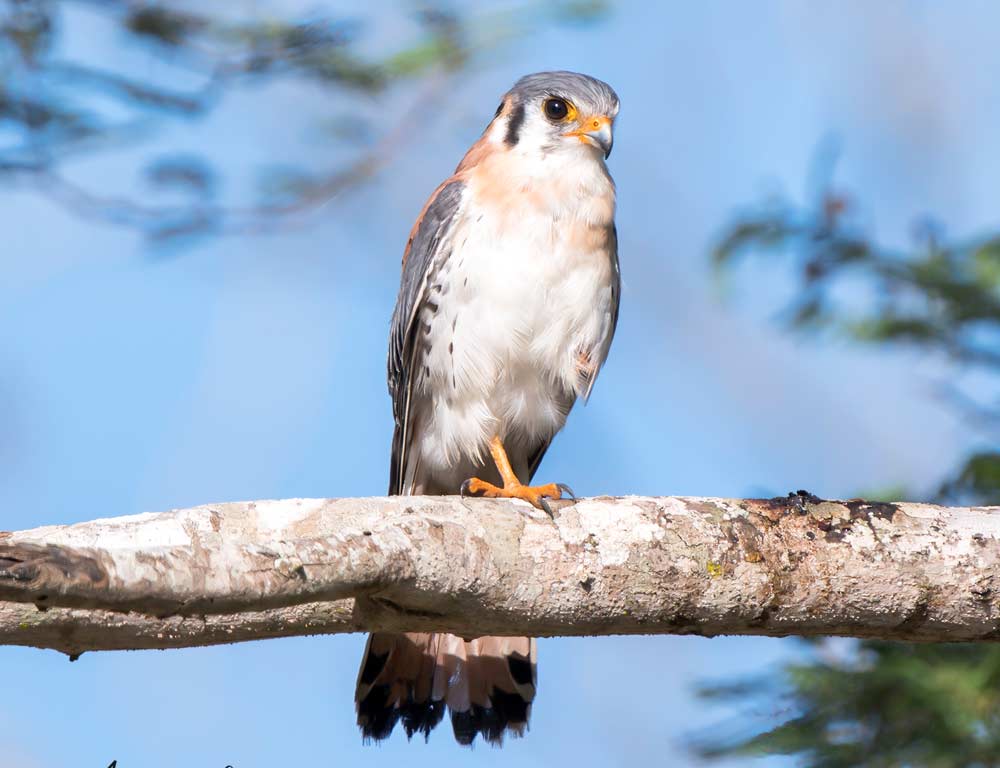
- Scientific Name: Falco sparverius
- Population: Common; widespread in North America.
- Life Span: 5 to 10 years.
- Size: 8 to 12 inches.
- Weight: 2.8 to 5.8 ounces.
- Food: Insects, small mammals, and birds.
- Wingspan: 20 to 24 inches.
The American Kestrel, a pint-sized falcon, graces Arizona’s skies with vibrant plumage and a distinctive hovering hunting style. Preferring open landscapes, it perches on wires or poles, scanning for prey precisely.
With remarkable agility, kestrels catch insects mid-air or dive swiftly to secure small mammals and birds.
Their adaptability to various habitats makes them a common sight, providing birdwatchers ample opportunities to observe their dynamic foraging techniques.
3. Merlin
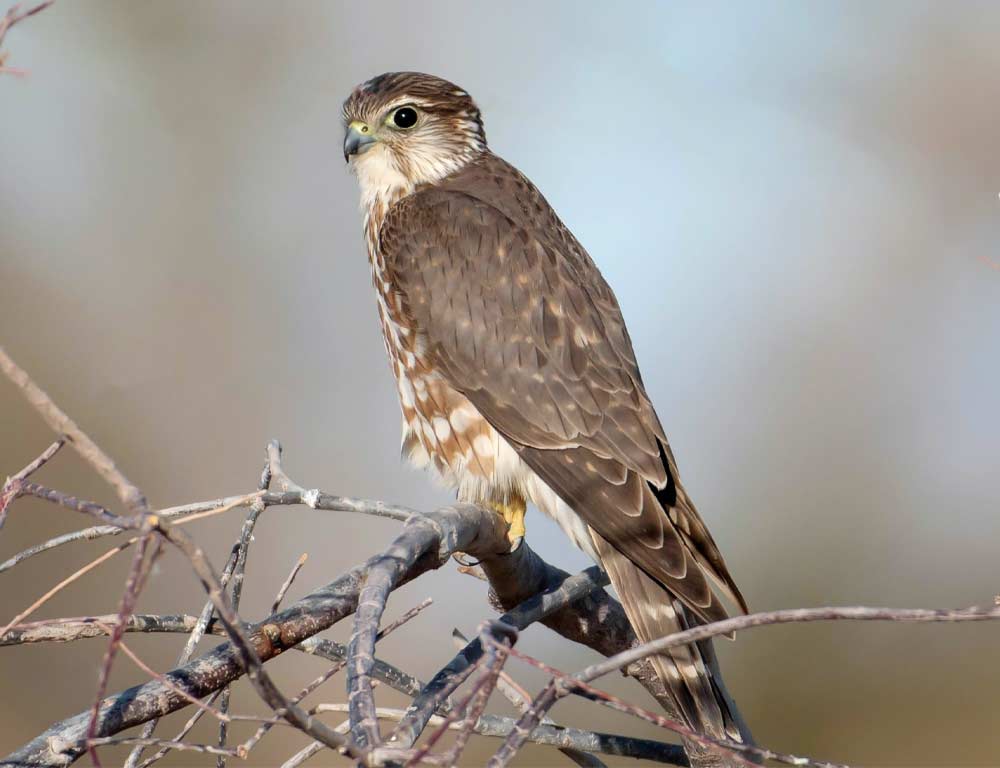
- Scientific Name: Falco columbarius
- Population: Varied; exhibits some decline in specific regions.
- Life Span: 5 to 10 years.
- Size: 10 to 13 inches.
- Weight: 5.6 to 8.5 ounces.
- Food: Small birds, insects, and occasionally bats.
- Wingspan: 20 to 26 inches.
The Merlin, a compact and agile falcon, frequents Arizona’s varied landscapes. They prefer open spaces and pursue small birds with remarkable speed and precision.
Merlins are known for their distinctive flight patterns, often characterized by rapid, twisting turns during pursuit.
Despite some regional declines, conservation efforts aim to sustain their populations, providing enthusiasts with opportunities to witness these skilled hunters in action.
4. Crested Caracara
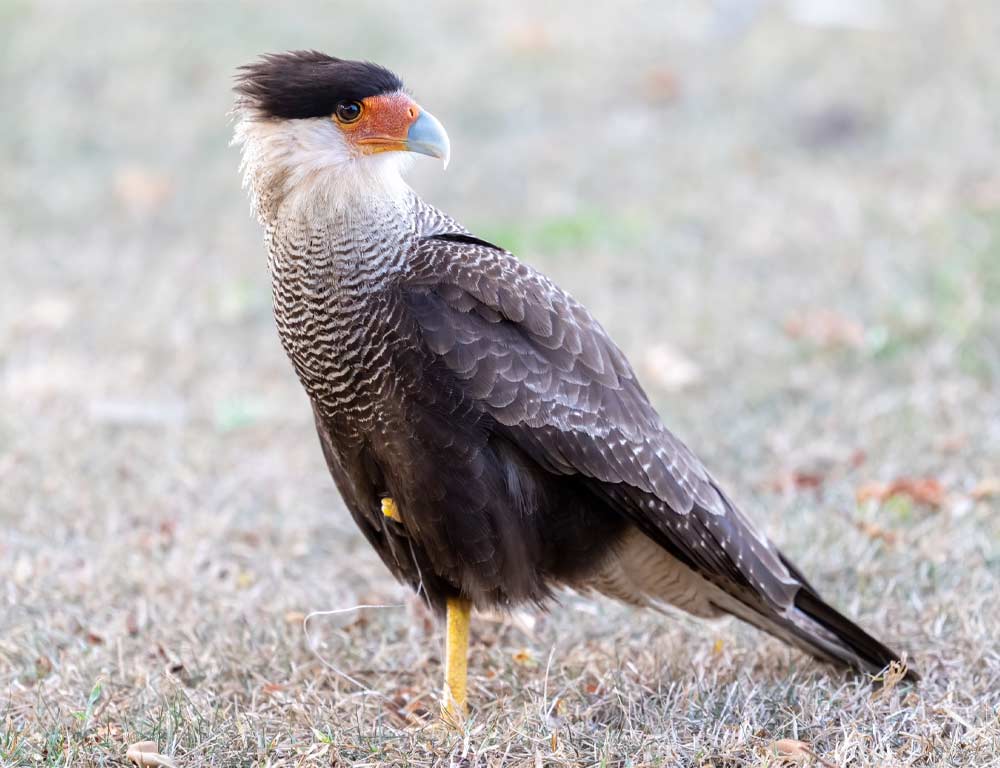
- Scientific Name: Caracara cheriway
- Population: Stable; found in specific regions.
- Life Span: 10 to 15 years.
- Size: 19 to 23 inches.
- Weight: 2.2 to 4.4 pounds.
- Food: Opportunistic; feeds on carrion, small mammals, reptiles, and birds.
- Wingspan: 4 to 4.5 feet.
With its distinctive appearance and behavior, the Crested Caracara adds a unique flair to Arizona’s avian diversity.
Preferring open country and agricultural areas, they scavenge for carrion and actively hunt small mammals, reptiles, and birds.
Their robust build and striking facial markings make them easily recognizable. Crested Caracaras often perch on the ground, utilizing their strong beaks to tear into their prey.
Their adaptability to various habitats, from grasslands to deserts, makes spotting these scavenging raptors an exciting prospect for bird enthusiasts.
5. Prairie Falcon
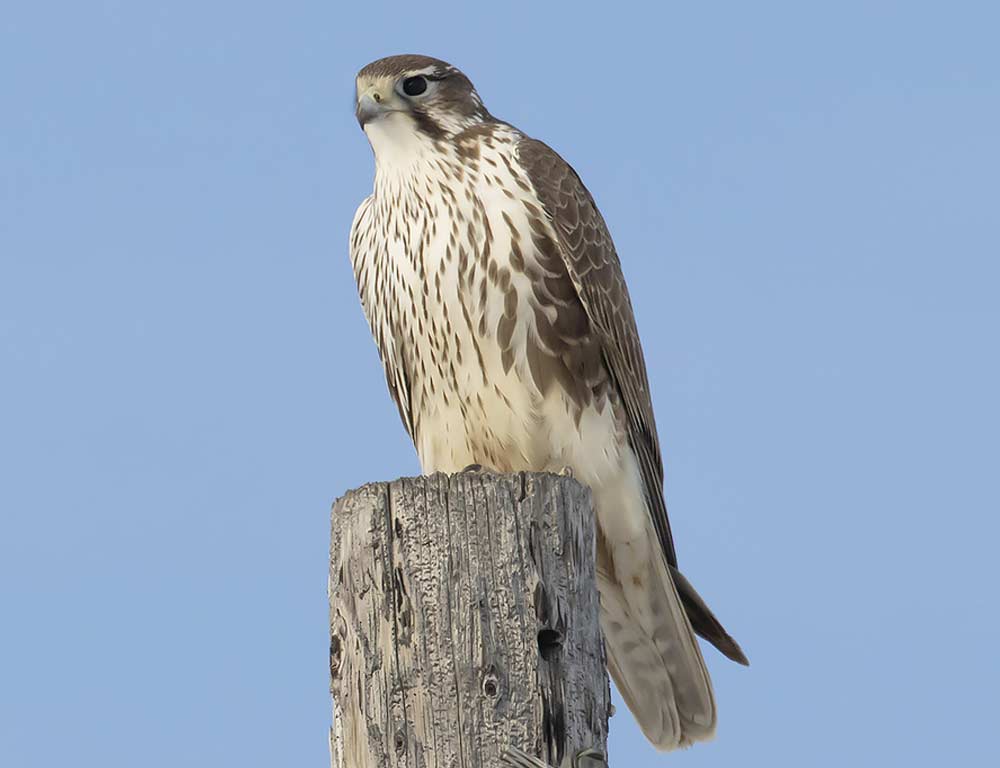
- Scientific Name: Falco mexicanus
- Population: Stable; found in arid and semi-arid regions.
- Life Span: 5 to 10 years.
- Size: 15 to 20 inches.
- Weight: 1.1 to 2.2 pounds.
- Food: Birds, especially pigeons and doves.
- Wingspan: 35 to 43 inches.
The Prairie Falcon, well-adapted to Arizona’s arid landscapes, is an impressive aerial predator. With a preference for open country, they hunt birds precisely, often targeting pigeons and doves.
Their swift and direct flight and strong nails allow them to pursue and capture prey mid-air.
Prairie Falcons are known for nesting on cliffs and rock formations, exciting birdwatchers exploring Arizona’s rugged terrains.
The stability of their populations ensures consistent opportunities for observers to witness these skilled hunters in their natural habitat.
Where Are the Best Places to Spot Falcons in Arizona?
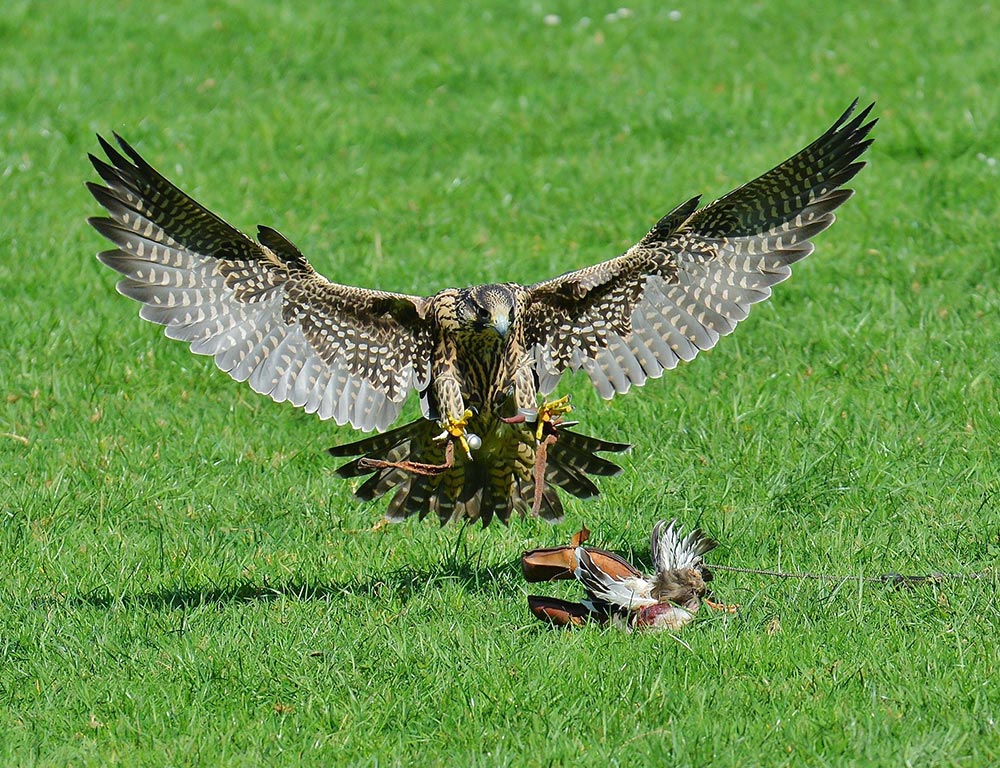
Arizona offers diverse habitats, making it an ideal location for spotting various falcon species.
Enthusiasts and birdwatchers can enhance their chances of encountering these majestic raptors by exploring the following prime locations:
Grand Canyon National Park
Peregrine Falcons are known to nest on the cliffs of the Grand Canyon. The expansive vistas and rock formations provide an excellent backdrop for observing their aerial prowess.
Sonoran Desert
American Kestrels thrive in the Sonoran Desert, utilizing saguaro cacti and power lines as perches. Their vibrant plumage stands out against the desert landscape.
Chiricahua Mountains
Merlins find a habitat in the Chiricahua Mountains. These agile falcons can be spotted darting through the sky, utilizing the varied terrain to pursue their avian prey.
San Pedro Riparian National Conservation Area
Crested Caracaras are often seen in the riparian areas of the San Pedro River, where they scavenge for food. The mix of water and vegetation attracts a variety of prey.
Verde River Valley
Prairie Falcons are frequently observed in the open landscapes of the Verde River Valley. Look for them perched on rock outcroppings or soaring through the sky for their next meal.
Tucson Mountain Park
Various falcon species, including Peregrine Falcons, can be found in Tucson Mountain Park. The mix of desert and mountainous terrain provides an ideal setting for these aerial hunters.
Watson Lake in Prescott
Watson Lake is a hotspot for birdwatching, attracting raptors like Prairie Falcons. The combination of water and surrounding landscapes creates a diverse ecosystem for birdlife.
Kofa National Wildlife Refuge
This refuge is known for its diverse bird species, and Crested Caracaras are often spotted here. The arid landscape and prey abundance make it a favored location for these scavenging falcons.
Remember to bring binoculars, a field guide, and patience, as observing falcons in their natural habitat requires a keen eye and a respectful distance.
These locations provide a glimpse into the captivating world of falcons amidst Arizona’s stunning landscapes.
Necessary Steps to Preserve Falcons in Arizona

Preserving falcons in Arizona involves a combination of conservation efforts, habitat protection, and public awareness initiatives.
Implementing these necessary steps can contribute to the long-term sustainability of falcon populations in the state:
Habitat Conservation
Identify and protect critical habitats for falcons, including nesting sites, roosting areas, and hunting grounds. Collaborate with government agencies, conservation organizations, and landowners to establish and maintain protected areas.
Research and Monitoring
Conduct thorough research on falcon populations, migration patterns, and breeding behaviors. Implement monitoring programs to track population trends, identify potential threats, and assess the effectiveness of conservation measures.
Legal Protections
Enforce and strengthen existing laws and regulations that protect falcons and their habitats. Implement measures to deter illegal hunting, disturbance, or capture of falcons. Advocate for stringent penalties for violations.
Community Engagement
Foster community involvement through education and outreach programs. Raise awareness about the importance of falcons in maintaining ecological balance and each individual’s role in their conservation.
Conservation Partnerships
Collaborate with government agencies, non-profit organizations, local communities, and private landowners to form partnerships dedicated to falcon conservation.
Pool resources, expertise, and efforts to maximize the impact of conservation initiatives.
Research on Threats
Investigate and address potential threats to falcon populations, such as habitat loss, climate change, pollution, and the impact of human activities. Develop strategies to mitigate these threats and ensure the resilience of falcon habitats.
Nesting Site Protection
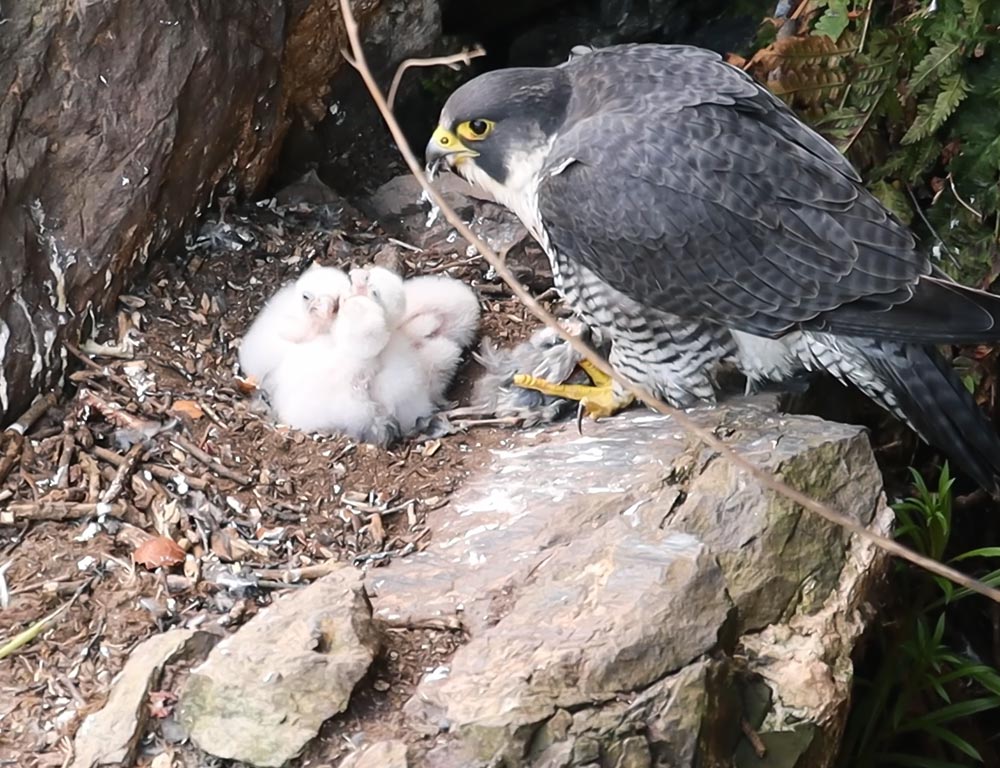
Implement measures to protect falcon nesting sites, particularly cliffs and rock formations. Erect signs and barriers to prevent disturbance during the breeding season, minimizing the risk of abandonment or nest failure.
Rehabilitation and Release Programs
Establish rehabilitation programs for injured or orphaned falcons. Work with wildlife rehabilitators and veterinary professionals to rescue, rehabilitate, and release falcons back into the wild.
Public Education and Advocacy
Engage in educational campaigns to inform the public about the importance of falcon conservation. Encourage responsible birdwatching practices and emphasize the role of falcons in maintaining ecological balance.
Research Funding
Advocate for and allocate funding for research projects focused on falcon conservation. Support studies that explore the impact of environmental changes on falcon populations and identify innovative conservation strategies.
Preserving falcons in Arizona requires a comprehensive and collaborative approach that involves the active participation of government bodies, conservation organizations, local communities, and individuals.
By addressing both immediate and long-term challenges, these steps can help safeguard the future of falcons in the diverse landscapes of Arizona.
Wrapping Up
In the vibrant landscapes of Arizona, the majestic flight of falcons graces the skies, adding a dynamic dimension to the state’s rich avian tapestry.
Through careful conservation efforts, habitat protection, and community engagement, we can ensure the longevity of these remarkable birds.
From the breathtaking stoop of the Peregrine Falcon to the agile pursuit of prey by the American Kestrel, each species contributes to the intricate balance of Arizona’s ecosystems.
As we explore prime locations like the Grand Canyon, Chiricahua Mountains, and the Sonoran Desert, the importance of preserving these habitats becomes clear.
With legal protections, research initiatives, and public awareness, we embark on a journey to secure the future of falcons, promoting a harmonious coexistence between these aerial predators and the diverse environments they call home.